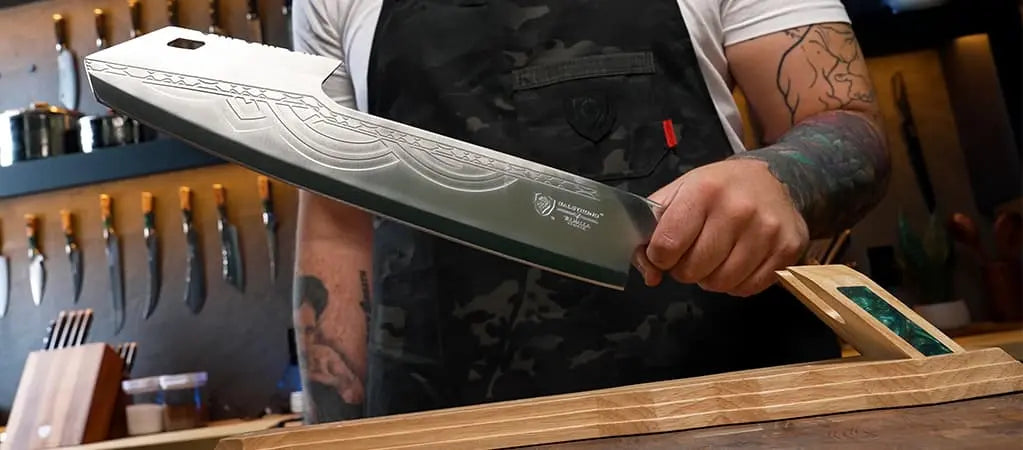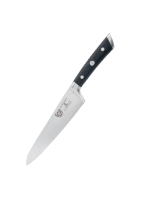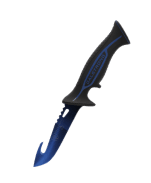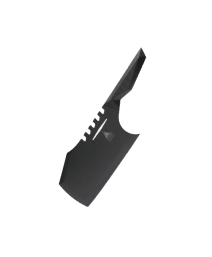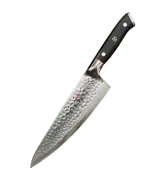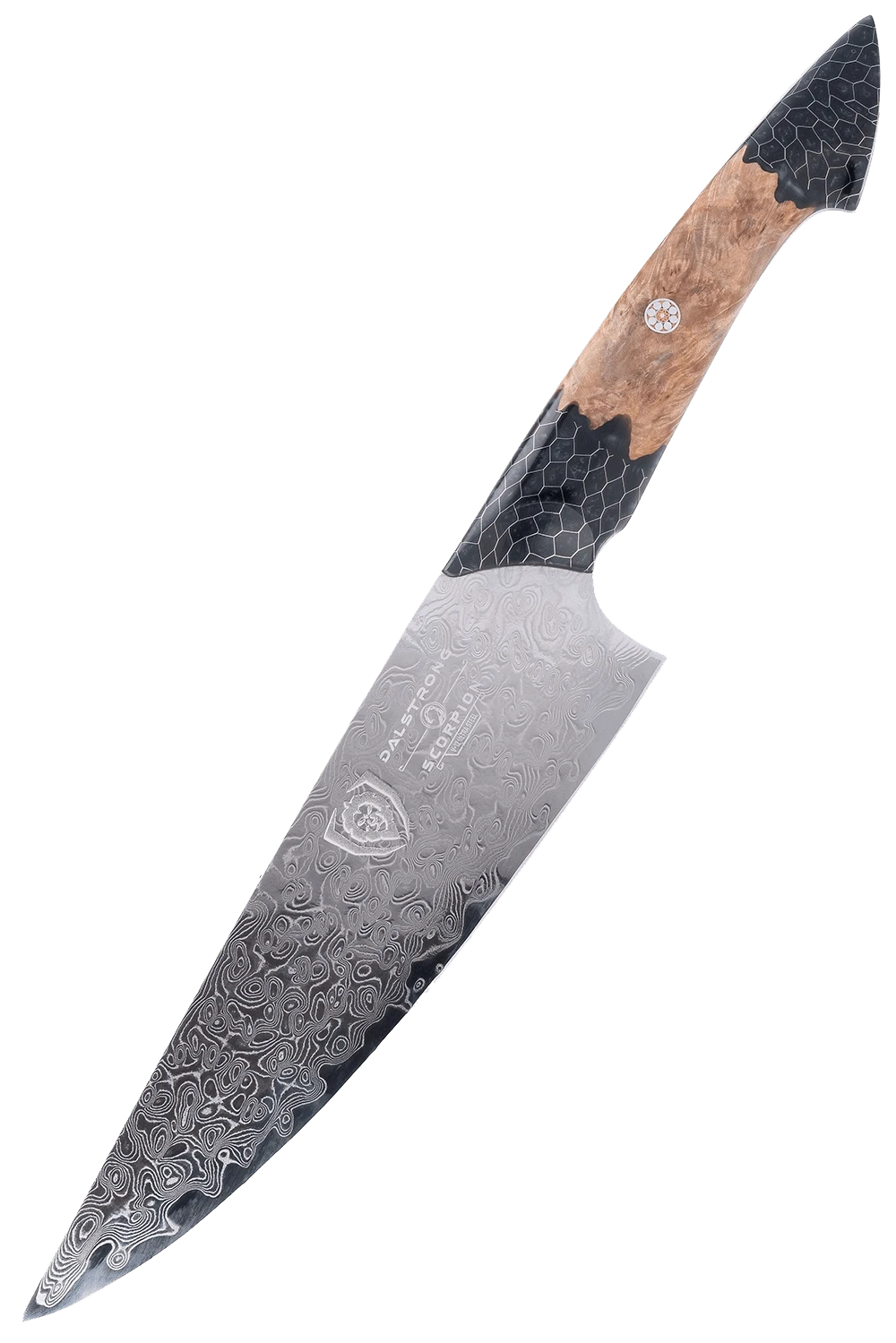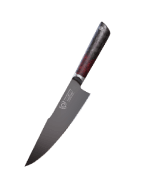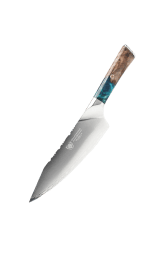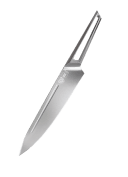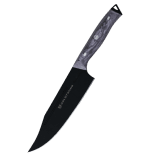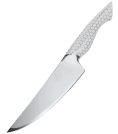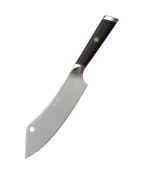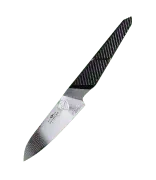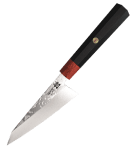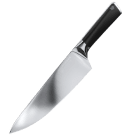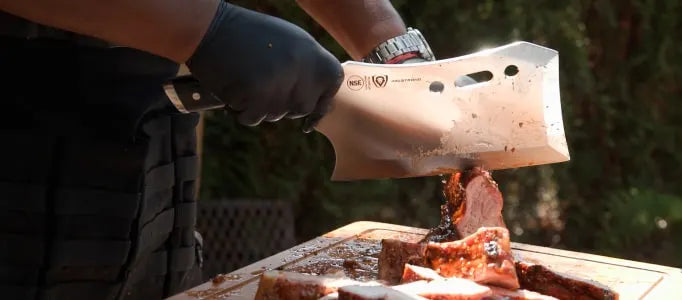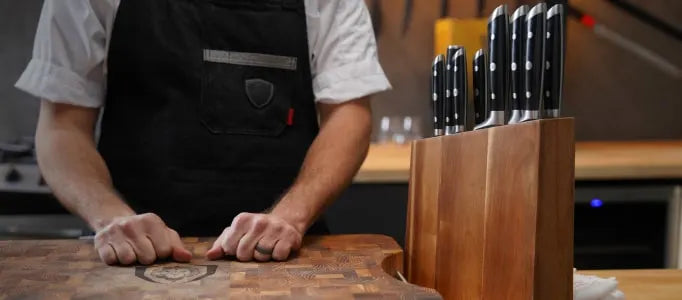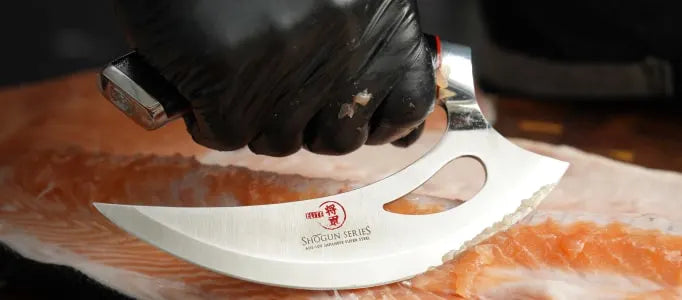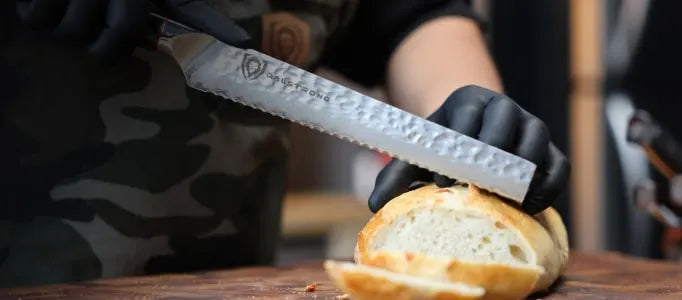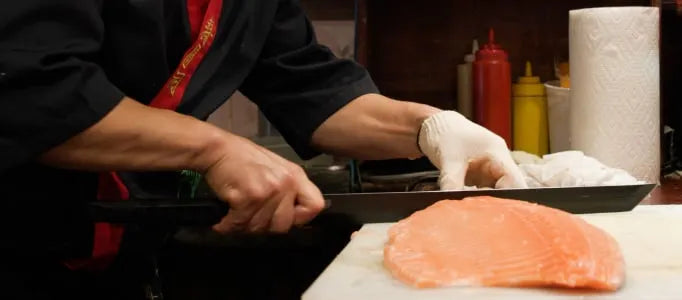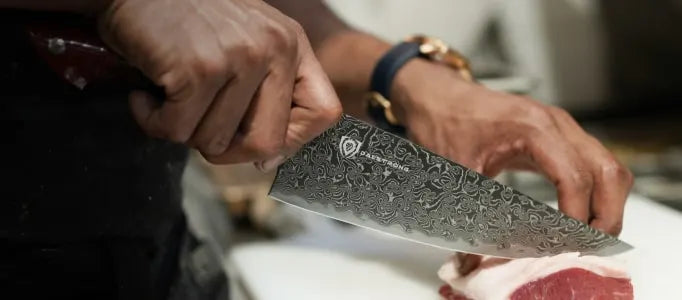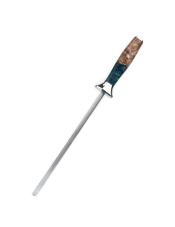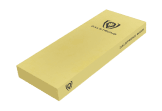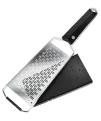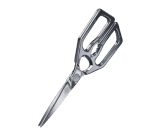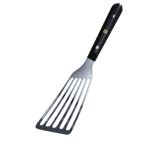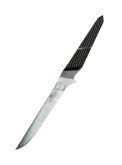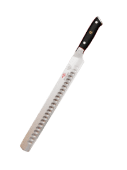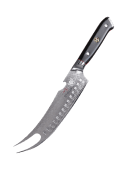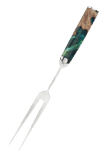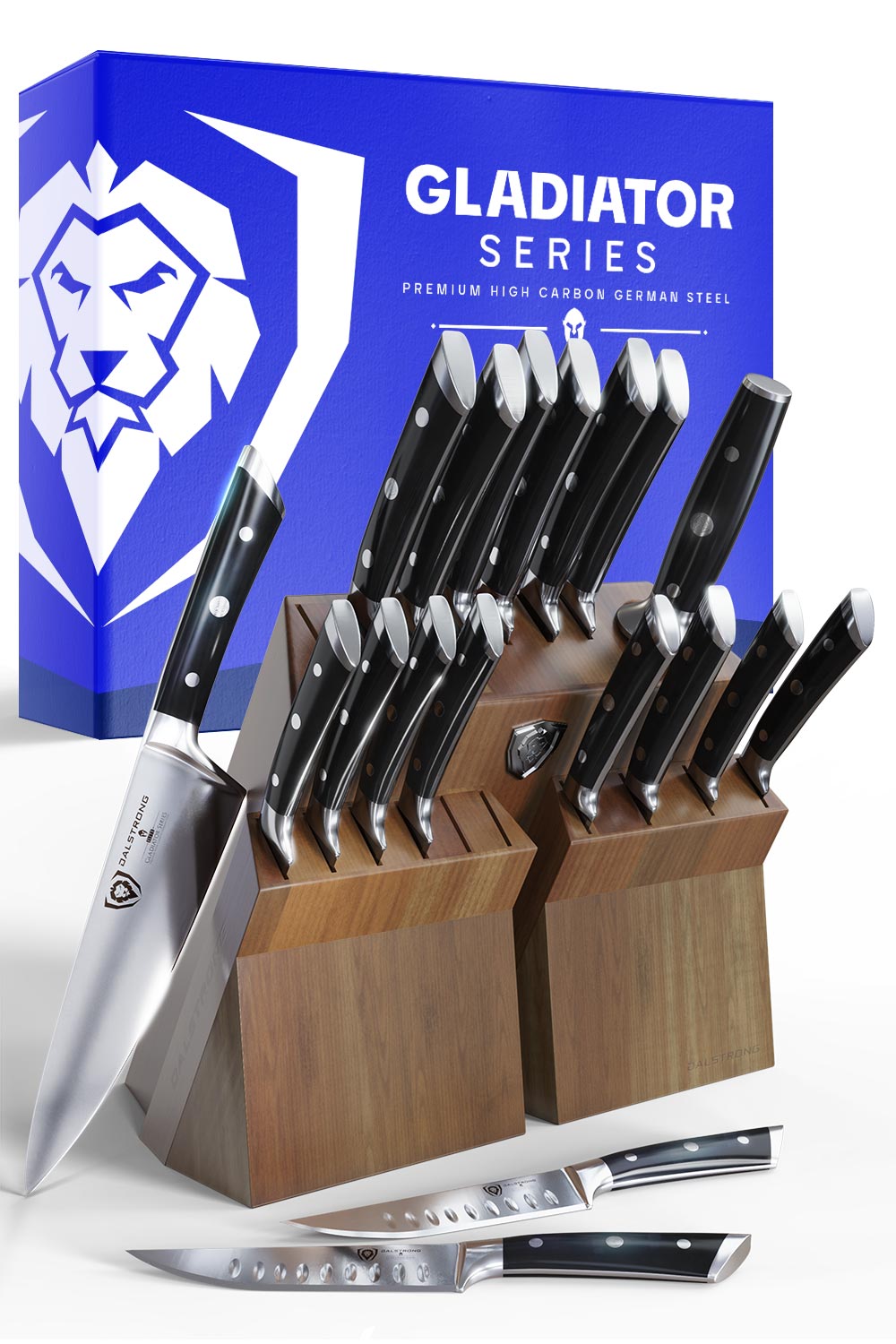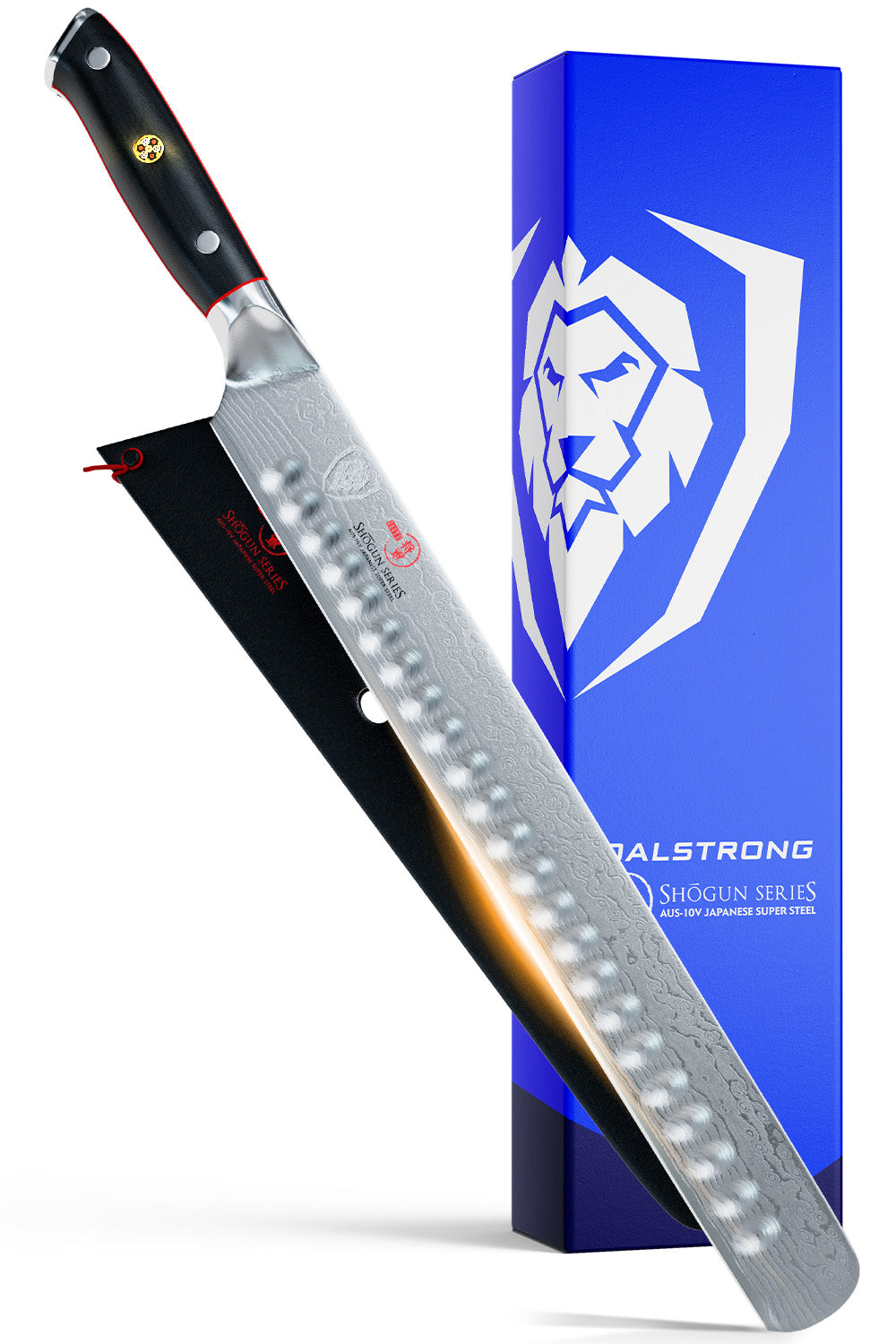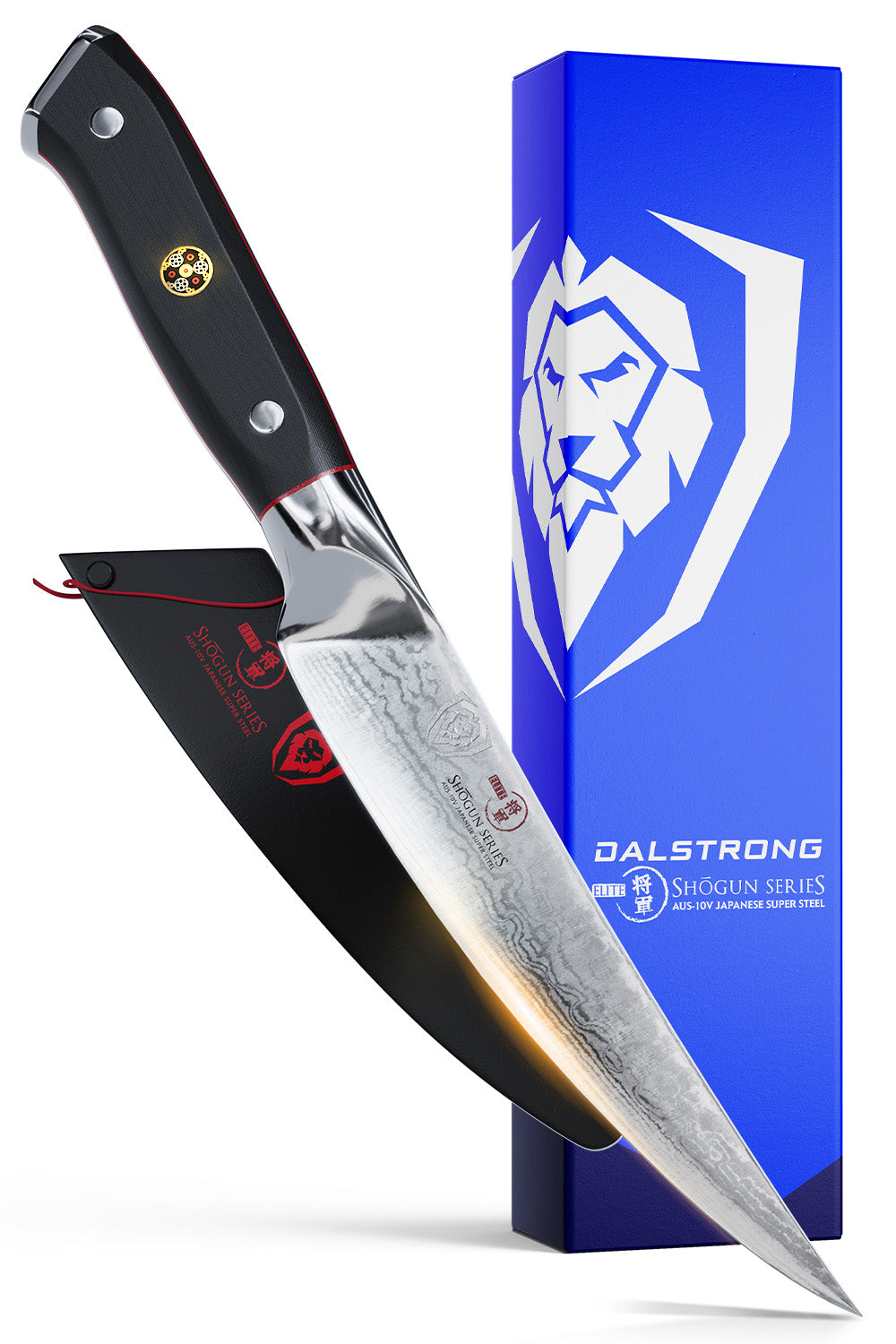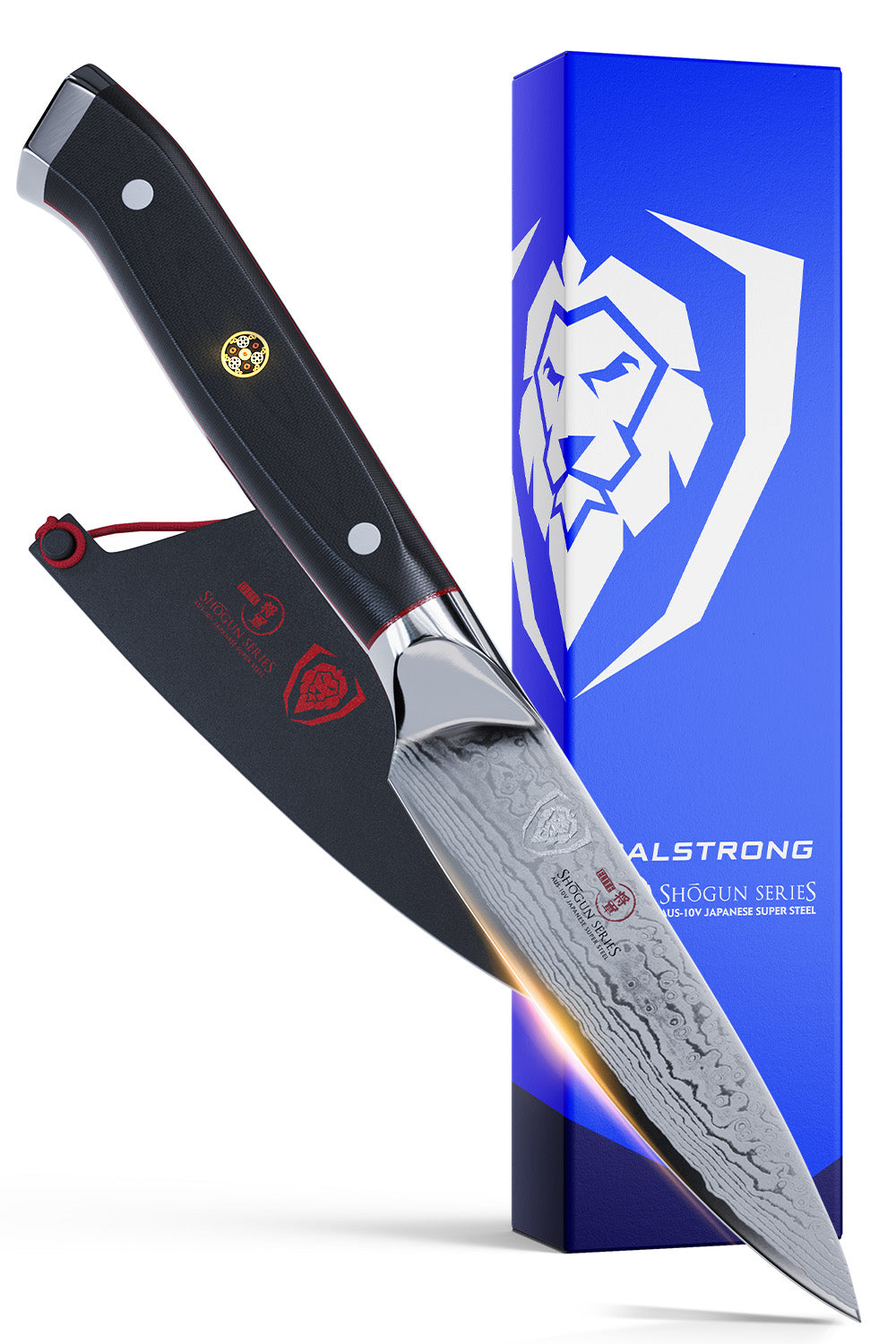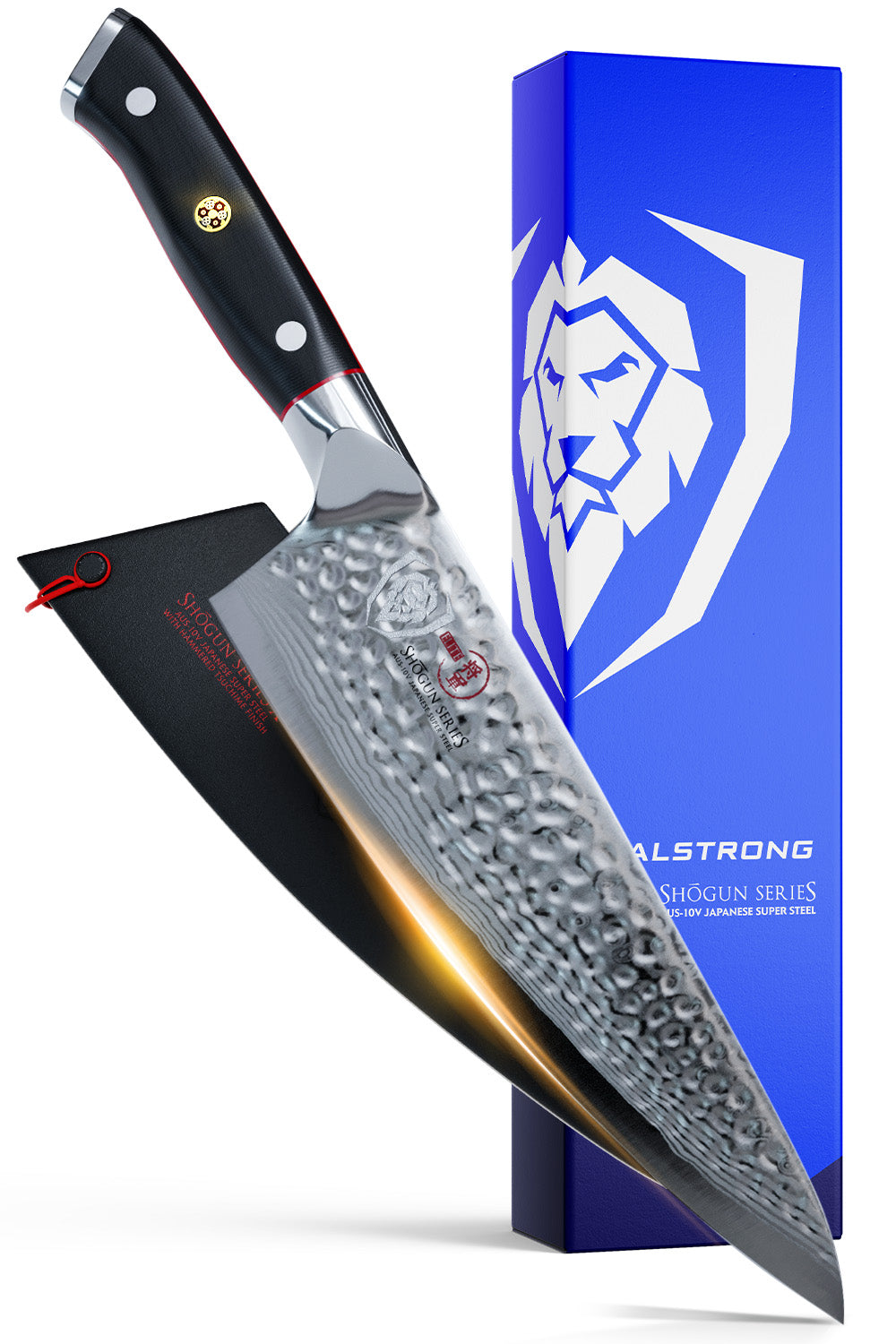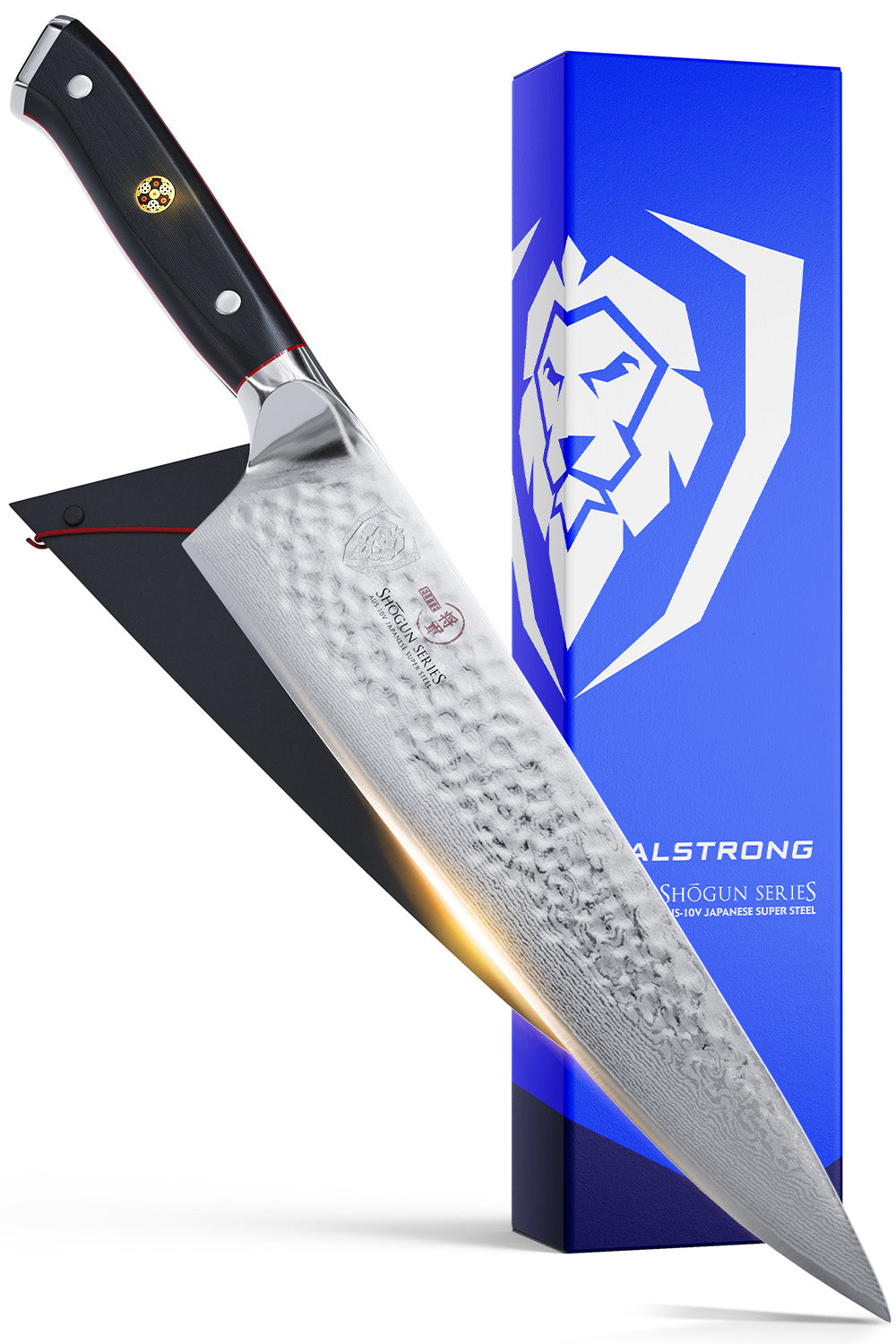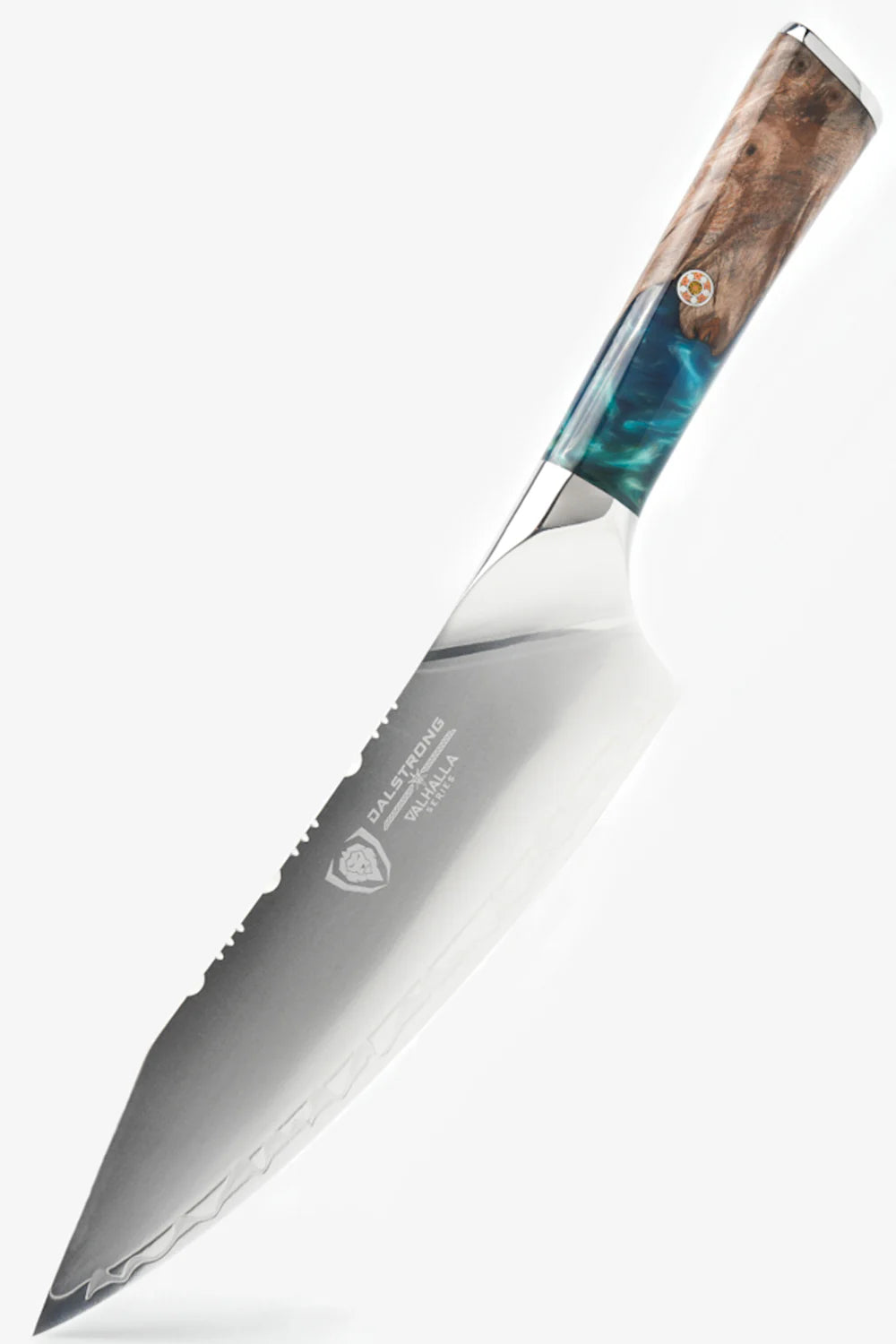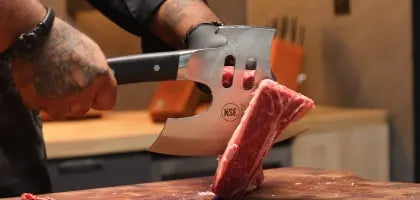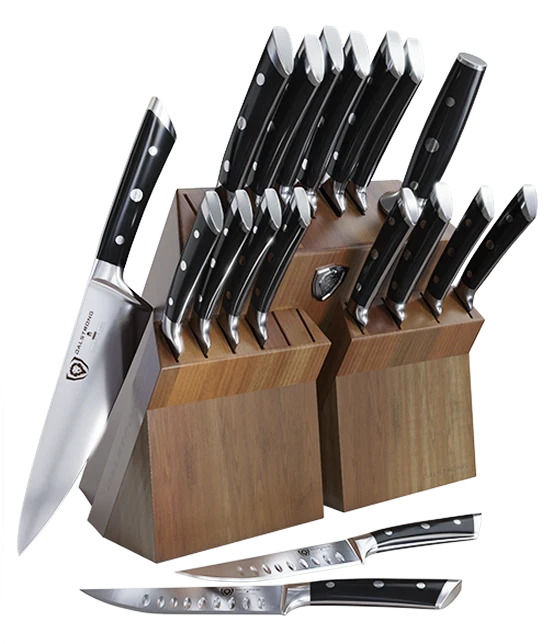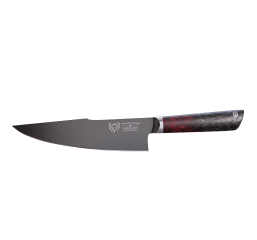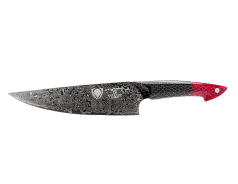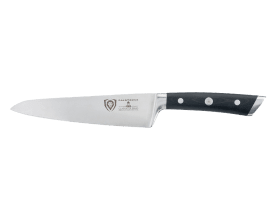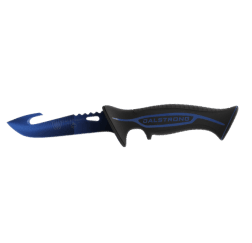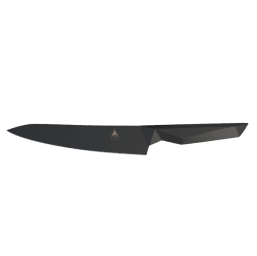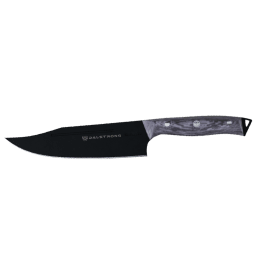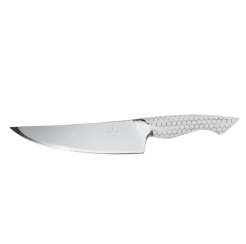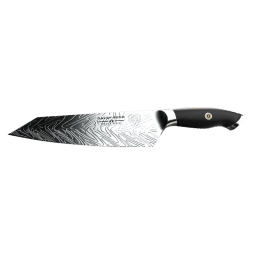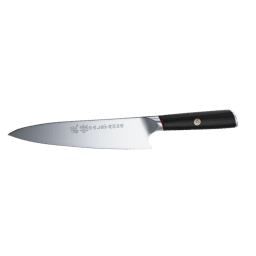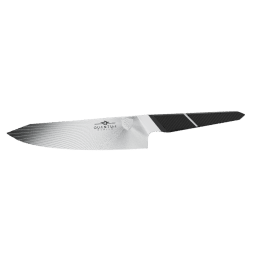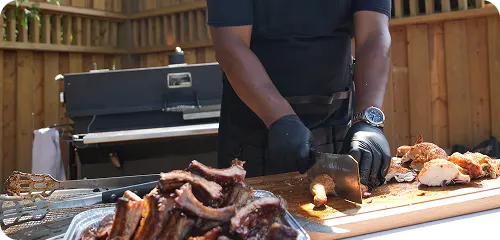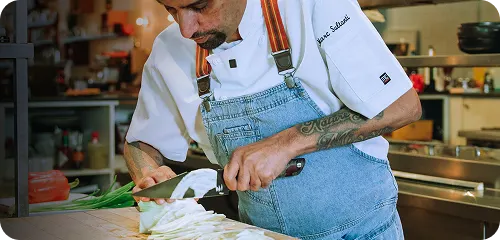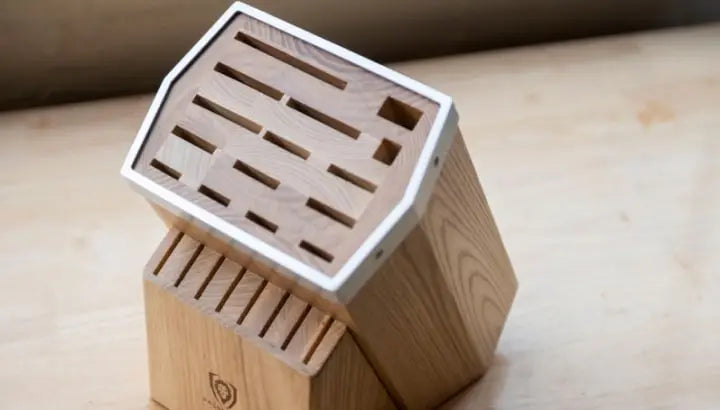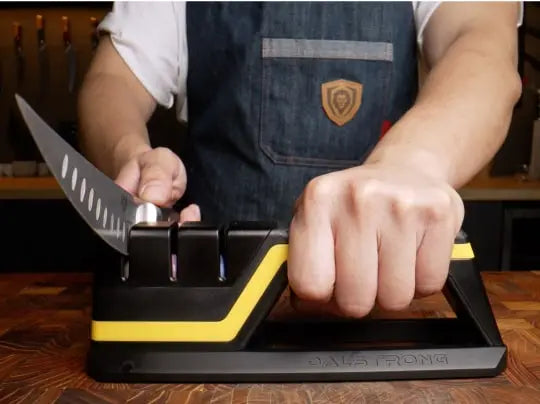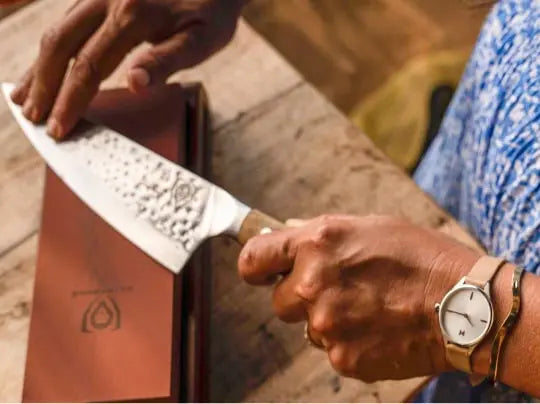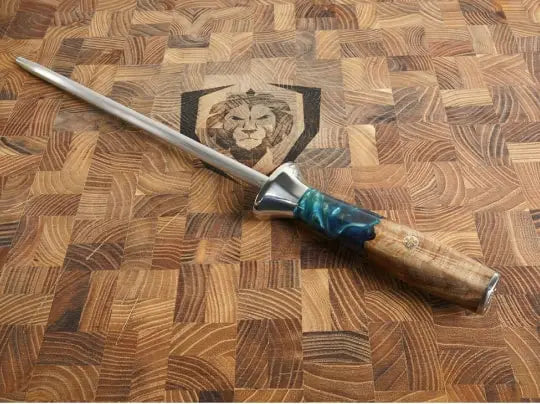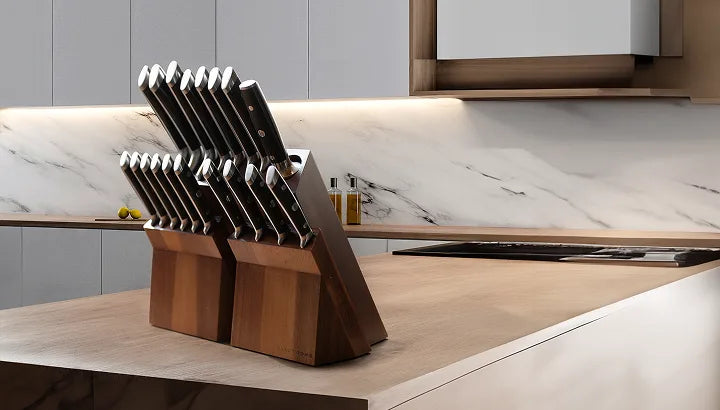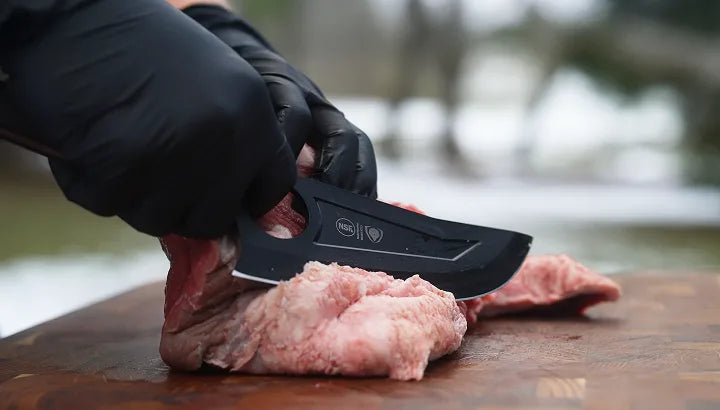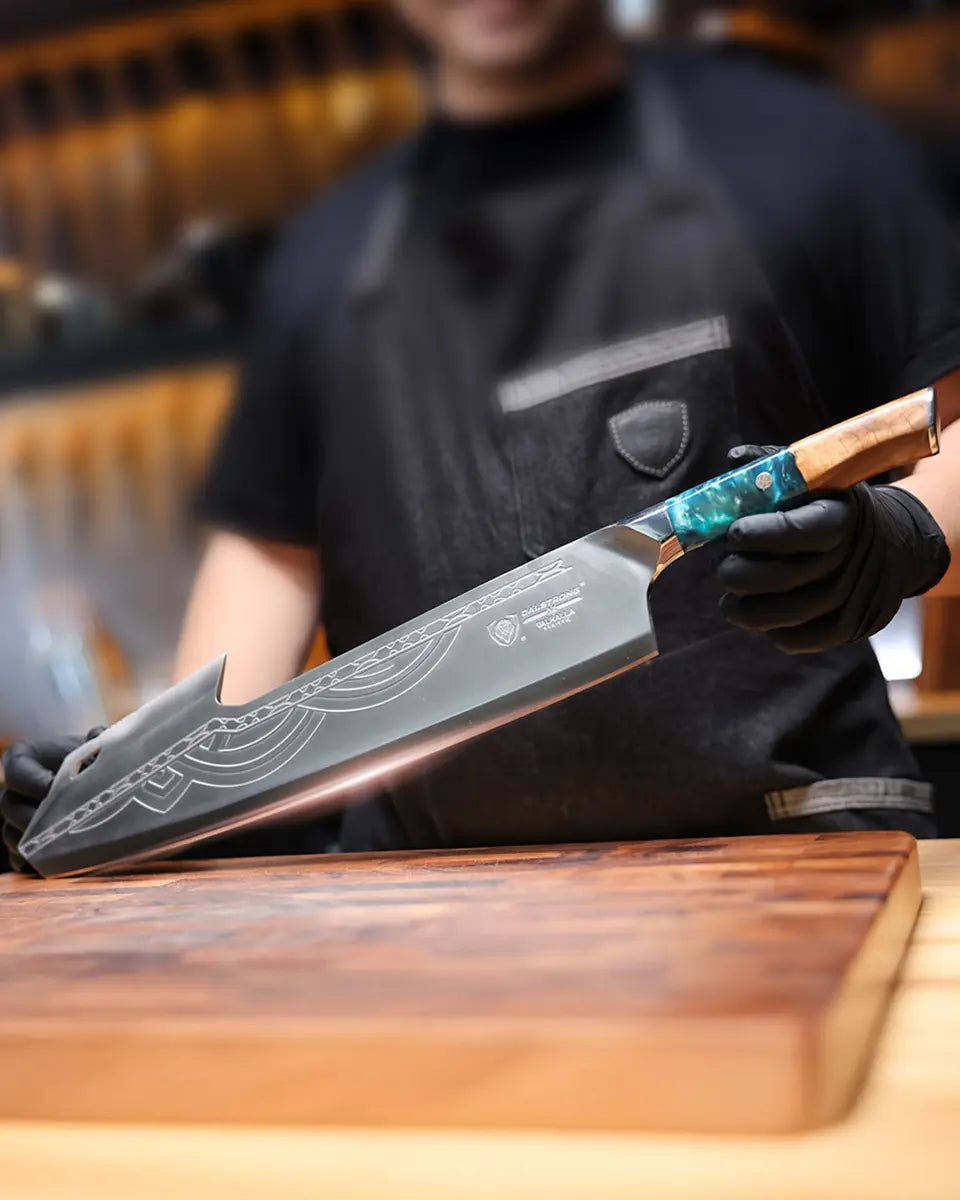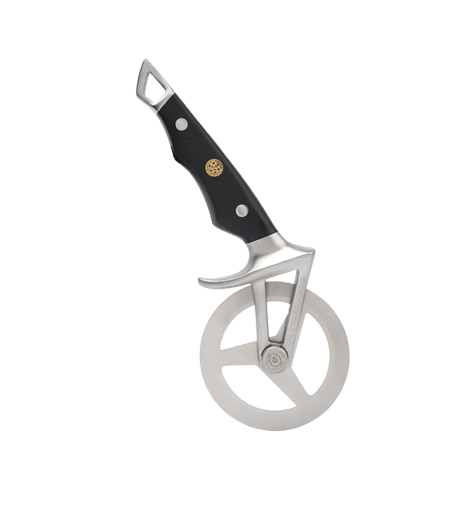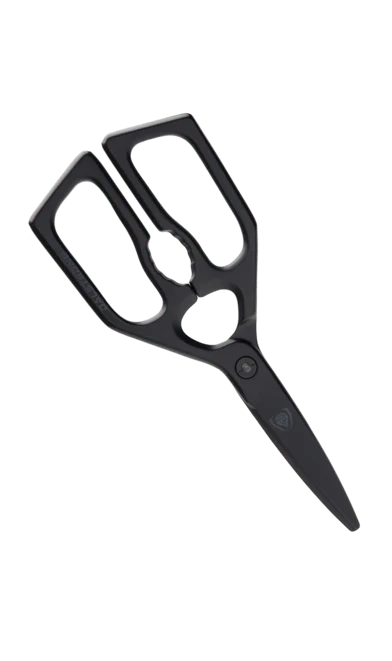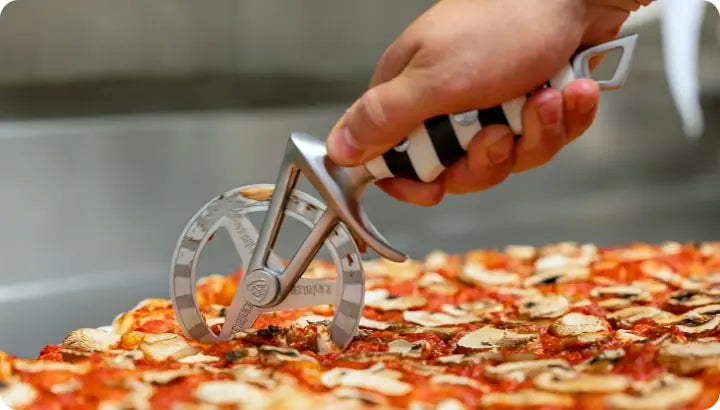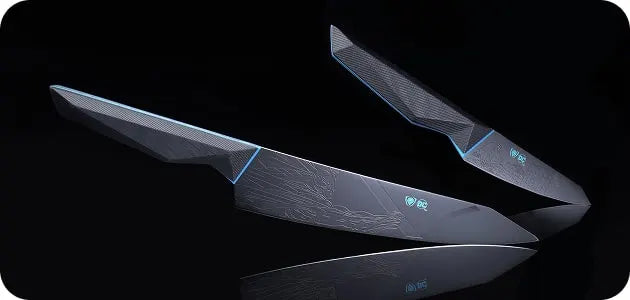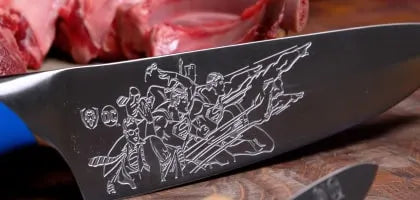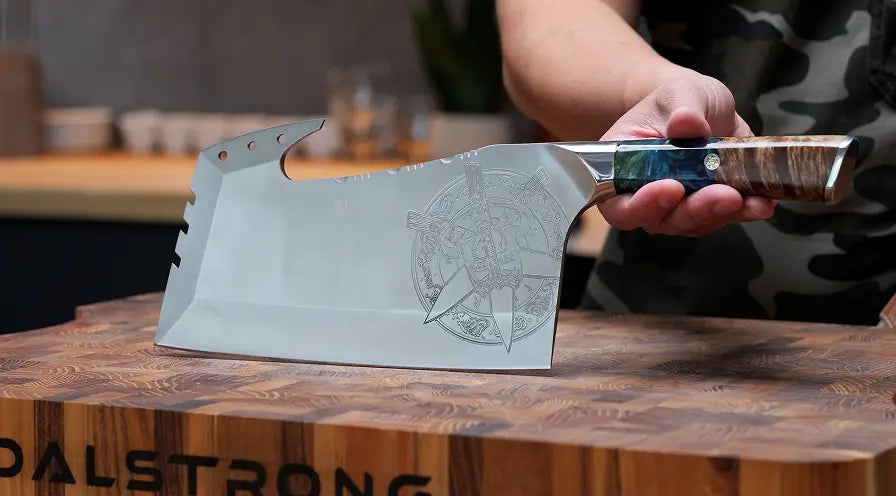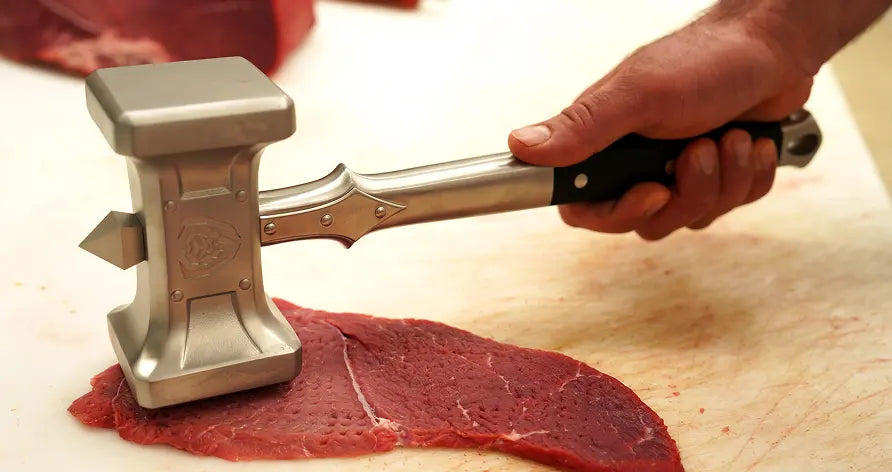 The Culinary Commander | Top-Grain Leather | Professional Chef's Kitchen Apron
The Culinary Commander | Top-Grain Leather | Professional Chef's Kitchen Apron
What is a Tuna Poke Bowl, and How To Make It
Tuna poke bowls have quickly become all the rage, first popping up in Hawaii then gaining momentum elsewhere in the world. They are a kind of salad consisting of sushi rice, raw fish, chopped vegetables, and various sauces.
- What is a Tuna Poke Bowl?
- Health Benefits of Tuna Poke Bowls
- The Best Tuna Poke Bowl Recipe
- Top 5 Knives to Slice Tuna
- Frequently Asked Questions About Tuna Poke Bowls
 Kiritsuke Chef's Knife 8.5" | Gladiator Series
Kiritsuke Chef's Knife 8.5" | Gladiator Series
1. What is a Tuna Poke Bowl?
I remember the first time I saw a poke bowl. It was only a few years ago. I was visiting a friend’s house and his wife was sitting at the table eating something that looked vaguely like a salad but also somehow vaguely foreign. “What is that?” I asked quizzically, noticing the chunks of raw salmon tossed over rice and soy sauce. “It’s like some sort of… sushi salad?”
That chance encounter kickstarted an obsession and over the next several years I became obsessed with trying every variation of the “poke bowl” that I could find. This also coincided with my culinary reawakening, so soon I found myself making my poke bowls, and finding ways to put new twists on what was rapidly becoming a very trendy (but also sometimes, tragically, very bland) food item.
First, let’s talk about what a poke bowl is. In Hawaiian, “poke” means “to slice or cut,” and it refers to chunks of raw unmarinated fish which is then tossed over rice along with vegetables and various sauces. In this case, we're talking about raw tuna. As much as the dish has steadily gained prominence in other places, it’s everywhere in Hawaii.
There are various types of poke bowls, of course, and some are a little more elaborate than others, but they all mostly follow the same basic principle. Here’s what’s in a classic poke bowl:
Rice
This is the baseline for any poke bowl. It’s what’s going to soak up the sauces as well as act as the main textural contrast for the additional ingredients. Most commonly, jasmine rice is used. But some folks have used bamboo rice as well, or brown rice (which adds an earthy taste to it). Low-carb options include zucchini noodles and kelp salad.
Fish
The undisputed star of the poke bowl is sushi grade fish. Like I mentioned earlier, salmon is a very popular ingredient, but tuna has also gained prominence. Raw yellowfin (ahi) tuna specifically. Other options include snapper or even if you’re not a fan of fish, tofu. It’s also becoming increasingly common to see poke bowls that use cooked crab.
Vegetables
Chopped vegetables are common in poke bowls, providing more textural contrast as well as flavor and nutritional value. Avocado is a very popular choice, unsurprisingly, since it provides a nice creaminess. But you’ll also see crispy garlic, shaved onion, and even seaweed.
Sauces
This is what’s going to give your poke bowl that extra bit of flavor. The dressing on your poke bowl is vitally important to determine the flavor profile of the dish. Soy sauce is a very common choice as are shoyu, ponzu, lemon juice, honey, and other such concoctions. Some folks like to put a dab of sriracha in their poke bowls as well.
Seasonings
Sesame seeds, flakes of pink salt, or scallions are very popular choices to enhance the dish’s flavor. Ginger is also very popular, but ginger tends to be quite overpowering. Heat lovers might also throw in a little bit of wasabi for an additional “kick” as well. Sesame seeds and chopped green onion are a nice touch to finish off your bowl.
To add a little "zing" to your bowl, try topping it with lime juice or sriracha sauce.
2. Health Benefits of Tuna Poke Bowls
One of the main draws of tuna poke bowls in particular is the customizability of the dish. Because you’re throwing in whatever you want (and in whatever quantity you want) you have a lot of control over how healthy or decadent your meal is. For instance, you could choose to use zucchini noodles (sometimes known as “zoodles”) instead of rice if you’re looking for a low-carb option, and substitute the fish for tofu if you’re avoiding meat. Some people even use brown rice.
But let’s stay focused on the health benefits of the classic tuna poke bowl. Truthfully, there’s a lot to talk about, as tuna has many health benefits that are important to our diets.
Tuna poke bowls help us retain healthy blood pressure since it contains omega-3 fatty acids and potassium. These are both anti-inflammatory and help keep our cholesterol and blood pressure in check, reducing the risk of heart attacks and strokes.
Tuna is also a protein powerhouse; a single serving contains more than 80 percent of the daily protein requirement. This helps keep your energy levels up. Ahi tuna also contains iron and B-vitamins, which aid in the production of red blood cells. So not only can you stay healthy by customizing the ingredients list in your poke bowl, there’s a lot of benefits to gain from the classic ahi tuna poke bowl recipe.
| Nutrition Facts | |
|---|---|
| For a Serving Size of 1 Serving (536g) | |
| Calories 1120 | Calories from Fat 621 (55.4%) |
| % Daily Value * | |
| Total Fat 69g | - |
| Saturated fat 11g | - |
| Cholesterol 50mg | - |
| Sodium 2350mg | 98% |
| Carbohydrates 93g | - |
| Net carbs 84g | - |
| Sugar 11g | - |
| Fiber 9g | 37% |
| Protein 31g | |
| Vitamins and minerals | |
| Vitamin A 90μg | 10% |
| Vitamin C 12mg | 20% |
| Calcium 100mg | 11% |
| Iron 3.6mg | 45% |
| Fatty acids | |
| Amino acids | |
| * The Percent Daily Values are based on a 2,000 calorie diet, so your values may change depending on your calorie needs. | |
3. The Very Best Tuna Poke Bowl Recipe
As I mentioned early, the growing popularity of the tuna poke bowl also means that it’s been somewhat watered down over the years and in some cases has been reduced to a merely functional dish that tastes “okay.” That shouldn’t stand! Tuna poke bowls should be exploding with flavor, textural contrasts, and all sorts of goodness.
Thankfully, they’re also extremely easy to put together and make the way you want to make them. Putting together a tuna poke bowl is a bit like putting together a salad. You simply throw a bunch of ingredients into a pot, toss them so the flavors and textures get to intermingle, and add in a bit of dressing.
So let’s take that concept and run with it by talking about a simple, low-effort (and therefore the best) tuna poke rice bowl recipe (with the option to make it a spicy poke tuna bowl if you’re as big a fan of sriracha as I am).
Do keep in mind that when it comes to selecting your tuna, you should pick fresh sushi grade yellowfin or bigeye tuna (both of them are referred to as “ahi tuna”). It should feature a pink or reddish color. What you want to stay away from is Albacore tuna, the white tuna used to make canned tuna fish.
Tuna Poke Bowl Recipe
|
Servings |
4 to 6 |
|
Prep time |
20 minutes |
|
Total time |
20 minutes (plus 15 for marinating) |
Ingredients
|
Soy sauce |
¼ cup + 2 tablespoons |
|
Vegetable oil |
2 tablespoons |
|
Sesame oil |
1 tablespoon |
|
Honey |
2 tablespoons |
|
Sambal Oelek (Chili garlic sauce) |
1 tablespoon |
|
Fresh grated ginger |
2 teaspoons |
|
Scallions |
3, thinly sliced |
|
Sushi grade ahi tuna |
1 pound |
|
Sriracha hot sauce |
To taste |
|
Sushi rice |
2 cups |
|
Rice vinegar |
3 tablespoons |
|
Sugar |
1 ½ teaspoons |
|
Salt |
½ teaspoon |
Optionally, you could add other toppings such as sliced avocado, sliced cucumber, pickled ginger, diced mango, potato chips, or sesame weeds. If you choose to add the pickled ginger, make sure you don’t add too much as ginger is an overpowering flavor and will be taking over your entire pike bowl.
And if you’re a fan of heat and want a spicy tuna poke bowl, you could go with either some sriracha sauce or a little bit of wasabi paste.
Instructions for the rice
The first thing we’re going to do is make our rice. If you’ve never cooked sushi rice before, this is a skill that’s going to come in handy for you.
- Add your rice to a fine mesh strainer, then submerge in a bowl filled with whatever. Make sure to shake the rice a few times to remove any excess starch.
- Once you’re done, transfer the rice to a medium pot and add 2 cups (480 ml) of water. Cover the pot and bring it to a boil over medium-high heat. Once the pot is boiling, reduce the heat to medium-low and let it simmer for 10 minutes.
- Remove the pan from the heat and let it rest for a good 15 minutes.
- Remove the lid and fluff the rice with a fork.
- Transfer the rice to a large bowl.
- Mix with rice vinegar, sugar, and salt. Pour it over the rice while it’s still hot. Then gently fold in the rice to incorporate. Cover it and set it aside until you’re ready to assemble the poke bowl.
Now that our rice is ready, we can get started with the actual poke bowl.
Instructions For The Tuna Poke
- In a medium bowl, whisk together your soy sauce, vegetable oil, sesame oil, chili garlic sauce, honey, ginger, and green onion. Add this point, also feel free to add your spicy ingredients if you’re feeling adventurous.
- Put the ahi tuna on a cutting board and use a long knife to slice through the ahi tuna without causing any damage to the meat. Use your knife to gently slice the piece of fish into ½ inch cubes
- Add in the ahi tuna and toss.
- Let the mixture sit in the fridge for at least 15 minutes.
- To serve, simply scoop the rice into a small bowl (or medium bowl) and top with ahi tuna poke and any additional toppings. Use the extra sauce for drizzling over the toppings or serve on the side if you like.
And there you have it. As you can see, it’s extremely easy to make your ahi tuna poke rice bowl. Like any salad, it’s extremely customizable and you can alter the ratio of ingredients however you like. The above is what I’ve found works best for me.
Bonus tip: It helps if you place the tuna in the freezer for a few minutes before you start slicing it, to help it firm up.
4. Top 5 Knives To Slice Tuna
To make the best ahi tuna poke bowl, you need to make sure to use the correct kitchen tools to cut the fish into the cubes it needs to be in. Here are our recommendations for the best kitchen knives to cut tuna with.
1. Deba Knife 6" | Single Bevel | Ronin Series
This 6” single-bevel knife is the ultimate Japanese fish butchering tool, designed to excel in the preparation of fish; chopping, gutting, filleting, and all sorts of precise cuts. This tool is designed for maximum maneuverability (not to mention awe-inspiring looks).
PROS:
- Features a narrow, razor-like profile thanks to the Shinogi surface that runs along the flat surface of the blade to the edge.
- Like other knives in the Ronin series, this single bevel blade is precision-forged from a single piece of ultra-premium Japanese high-carbon AUS-10V steel.
- Hand-finished in the Honbazuke 3-step method for a beautiful mirror polish.
- Features a traditional octagon-shaped handle made of G10 garolite.
CONS:
- This amazing-looking knife is a conversation starter. If you prefer a more understated look, check out the other knives in this list.
- This is a 6.5” fish butchering knife; you might prefer a longer blade.
2. Kiritsuke Chef's Knife 8.5" | Collector Set | Omega Series
This Kiritsuke is a multi-purpose, high-performing blade that will easily handle any fish you need to tackle. It’s great for slicing, and its visual presentation makes it clear that this is a ruthlessly sharp, premium-quality kitchen tool.
PROS:
- Made of ultra-premium American forged BD1N-VX hyper steel.
- The blade features an added vacuum heat treatment to 63 Rockwell.
- Absolutely gorgeous knife, with the “LiquidMetal” blade pattern. Not only does it look great, but it also aids in your food preparation by reducing drag and increasing efficiency.
- Features a highly durable military-grade G10 handle.
CONS:
- Like the other Kiritsuke knives below, this knife is an 8.5” knife, a great size for most fish-related tasks. However, if you’re looking for something smaller, check out the Deba knife listed above.
- This stunning piece of engineering is definitely in the upper end of the price range represented in this list. You’re getting a world-class tool for a great price, but some home cooks may be looking for something a little more affordable.
3. Kiritsuke Chef's Knife 8.5" | Shadow Black Series | NSF Certified
Dalstrong’s Shadow Black series features incredible knives with screamingly sharp cutting edges, comfortable ergonomic handles, and great ease of use. They also happen to look like the coolest knives you’ve ever seen. Not only does their midnight-black look awesome, but they feature a unique handle geometry (inspired by the F-117 Nighthawk Stealth Fighter) for comfort and maneuverability.
PROS:
- Menacing look and comfortable feel, with a beautiful hand-polished satin finish.
- Features a black, non-reflective titanium nitride coating which adds to its awesome look and enhances its non-stick properties.
- Precision forged, ultra sharp, wear-resistant, single-piece high carbon German steel.
- Fiber-resin military-grade G10 ergonomic handle.
CONS:
- Visual appeal is always a subjective thing. I love the unusual look of this series, but some people may not be into it.
- The titanium nitride coating might make you hesitant to sharpen it at first, but don’t worry; you won’t damage it.
4. Kiritsuke Chef's Knife 8.5" | Gladiator Series | NSF Certified
Part of Dalstrong’s acclaimed Gladiator series. This 8.5” Kiritsuke knife is a grade-A performer, as well as featuring a stunning, elegant, timeless design sure to complement your kitchen.
PROS:
- Great for push cuts and slicing, with a sword-like front end for extra effectiveness.
- Triple-riveted handle with a stainless steel second bolster.
- Made of a single piece of precision forged, ultra sharp, wear-resistant, high carbon German ThyssenKrupp Steel
- Low maintenance knife, cleans very easily.
CONS:
- This knife is a little on the heavier side, which should be fine for most home chefs but might take a little getting used to if you’ve only ever used cheaper products.
- A very robust tool, but it does have a bit of flexibility.
5. Kiritsuke Chef's Knife 8.5" | Crusader Series | NSF Certified
Here’s another awesome 8.5” Kiritsuke knife from the Crusader series. This is a series of knives that shoot for a clean, minimalistic, less-is-more aesthetic; it’s a gorgeous all stainless steel knife that looks effortlessly elegant and performs wonderfully in the kitchen. With this 8.5” Kiritsuke you’ll make quick work of any piece of fish.
PROS:
- The blade is made of razor-sharp, German-made ThyssenKrupp x50crmov15 blade steel at 58+ Rockwell for incredible performance.
- The blade’s high chromium stainless steel handle is carefully hand-polished for a smooth and comfortable finish.
- Like other knives from the Crusader series, this Kiritsuke features a gorgeous design, with a minimalistic, understated aesthetic that will blend right in with the rest of your kitchen tools or your décor.
- This knife features a solid steel design which guarantees resilience and toughness. Not only that, but they are very hygienic due to the seamless transition from blade to handle; it leaves no space for debris to go.
CONS:
- Because of the hollow handle design, this slicer is a little bit lighter than others featured in this list.
- Some home cooks may not be fans of the clean, minimalistic look.
5. Frequently Asked Questions About Tuna Poke Bowls
What is usually in a poke bowl?
Poke bowls usually contain rice, chunks of raw fish (most commonly salmon or ahi tuna), chopped vegetables, and some sort of sauce or dressing (such as soy sauce).
Are tuna poke bowls healthy?
Like any type of salad, it depends on what you put in it. Tuna poke bowls can be customized in several ways to be as healthy as you want them to be, by substituting rice for zucchini noodles or even by substituting the fish for tofu. Some folks even use brown rice instead of white. But by themselves in the classic recipe, tuna poke bowls have several health benefits due to the nutritional content of ahi tuna.
What is tuna poke?
“Poke” comes from the Hawaiian “to slice or cut,” and it refers to chunks of raw fish tossed over rice along with vegetables and various sauces.
How do you cut tuna for poke?
To cut ahi tuna for poke you need, get it into cube form. So you need to use a very sharp knife. Put the fish on a cutting board and use a long knife to slice through the ahi tuna without causing any damage. Use your knife to slice the piece of fish into ½ inch cubes.
Are you supposed to mix a poke bowl?
Well, you’re not “supposed” to, but nobody’s going to judge you for it. The poke bowl was not designed to be eaten as a big mix. They’re constructed to be an experience of multiple flavors and textures with each bite. But it’s your food and you can do whatever you want with it!
How do you store leftover pokes?
While it’s preferable to eat poke the day it’s made, you can store it in an airtight container in your fridge for up to 2 days.
Should a poke bowl be hot or cold?
Poke is traditionally served cold. Some recipes include warm ingredients such as cooked tofu or seared tuna, but if we’re sticking with the strictly traditional Hawaiian poke bowls, they are served cold.
What hot sauces go well with poke?
Sriracha has become a favorite. It’s because of sriracha’s sweetness, tanginess, and garlic flavor, which interact beautifully with some of the more subdued flavors of the rice and the tuna.
Shop Dalstrong Knives Today
Written by Jorge FarahBorn on the coast of Colombia and based in Buenos Aires, Jorge is a cooking enthusiast and kitchenware obsessive with a tremendous amount of opinions.



